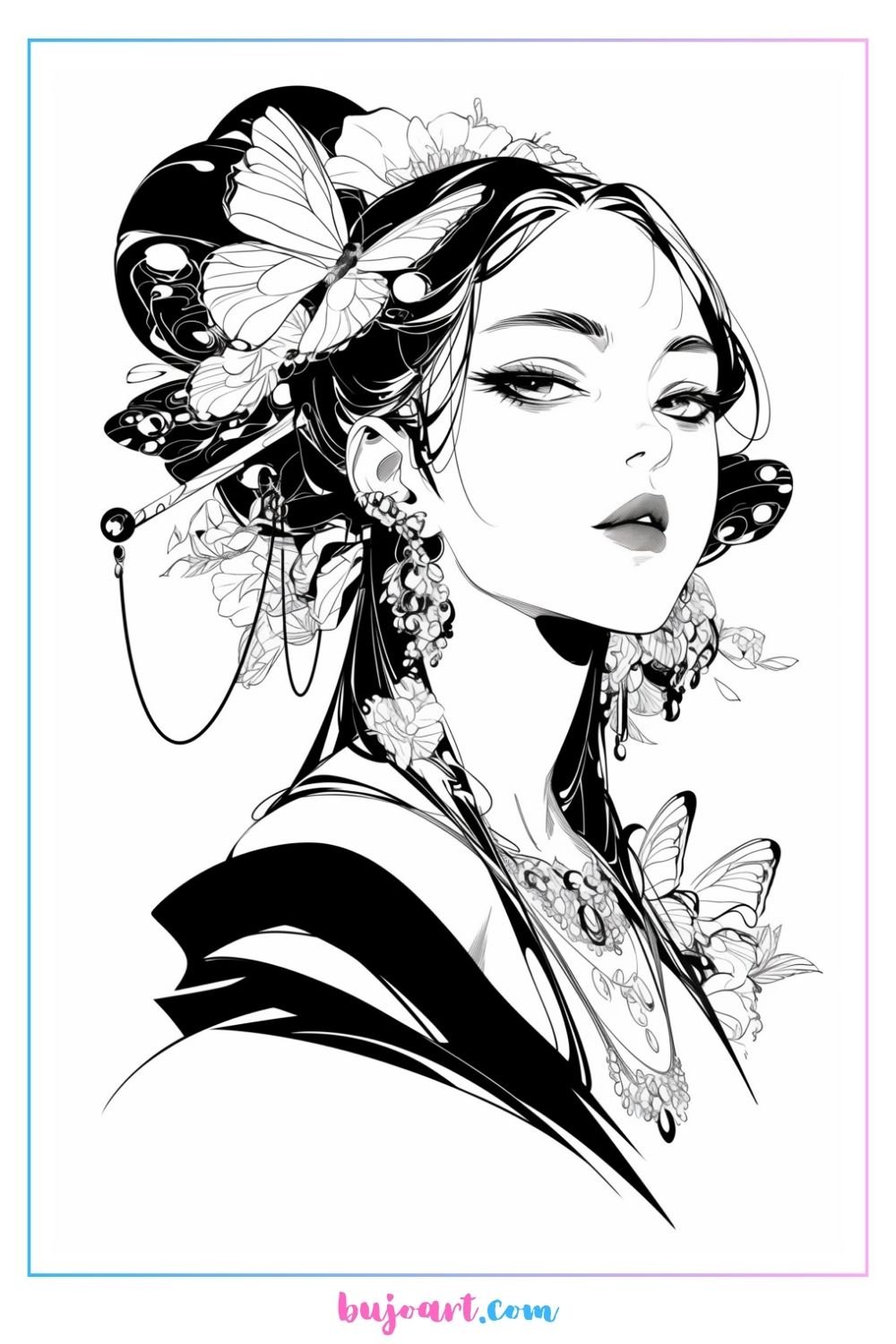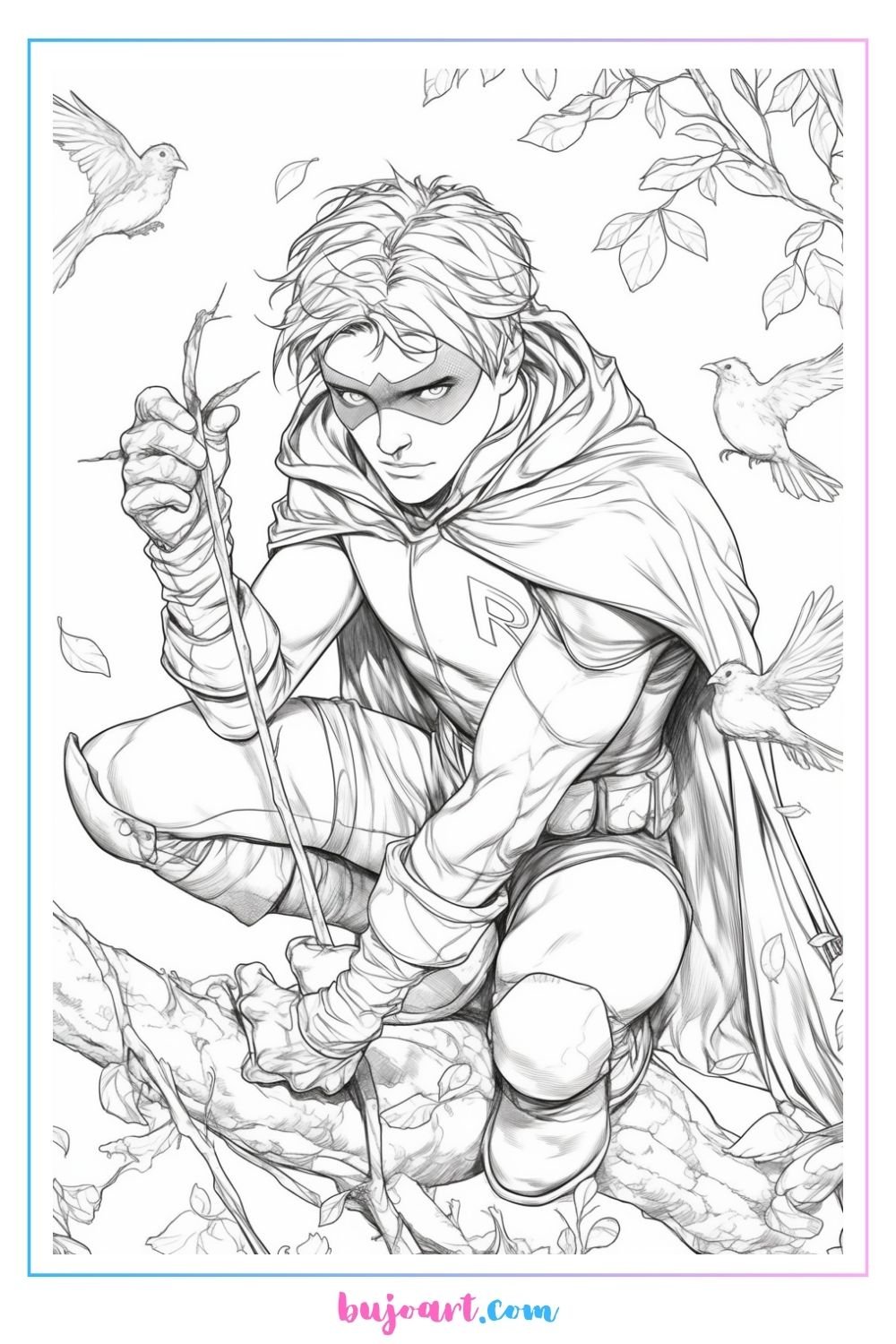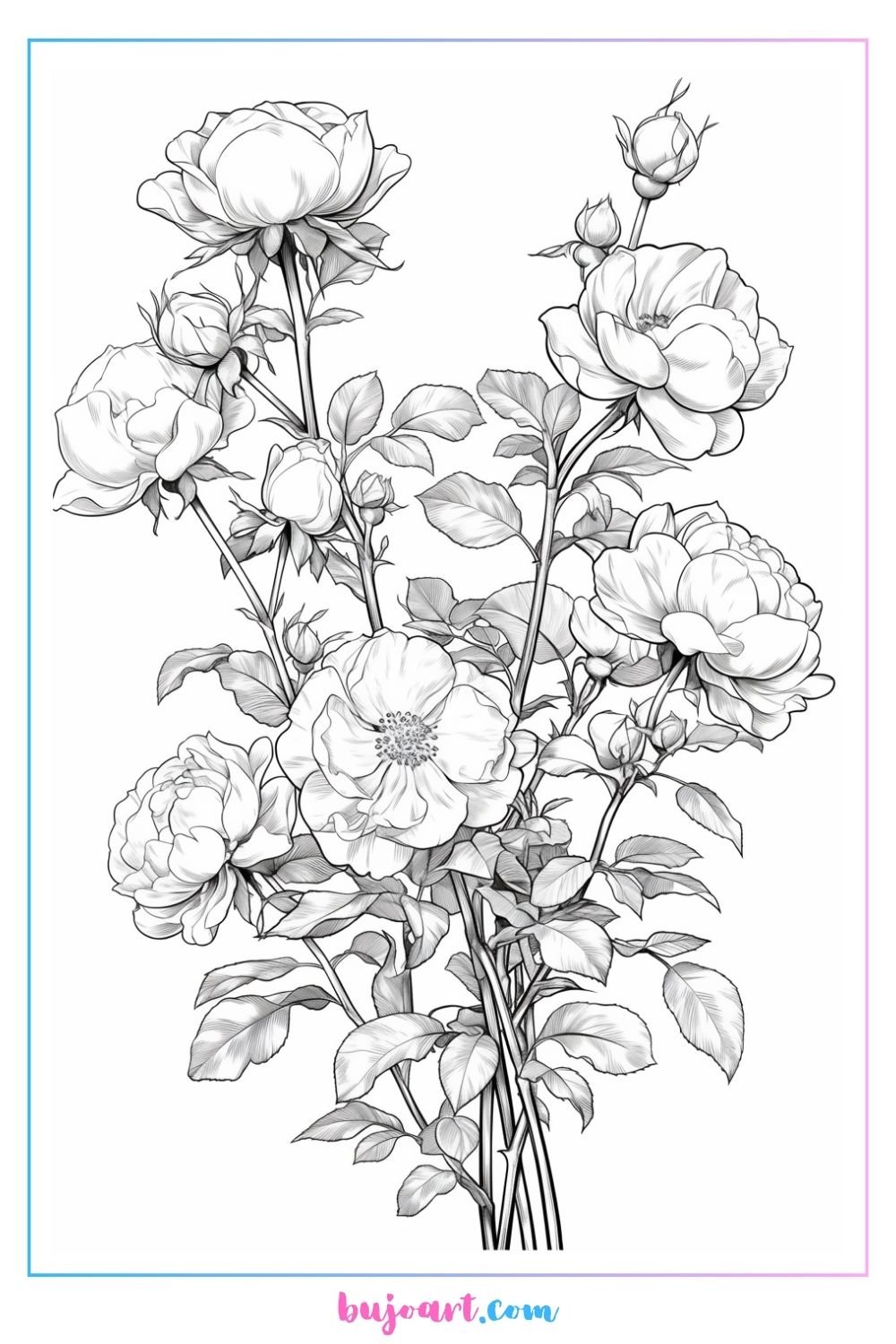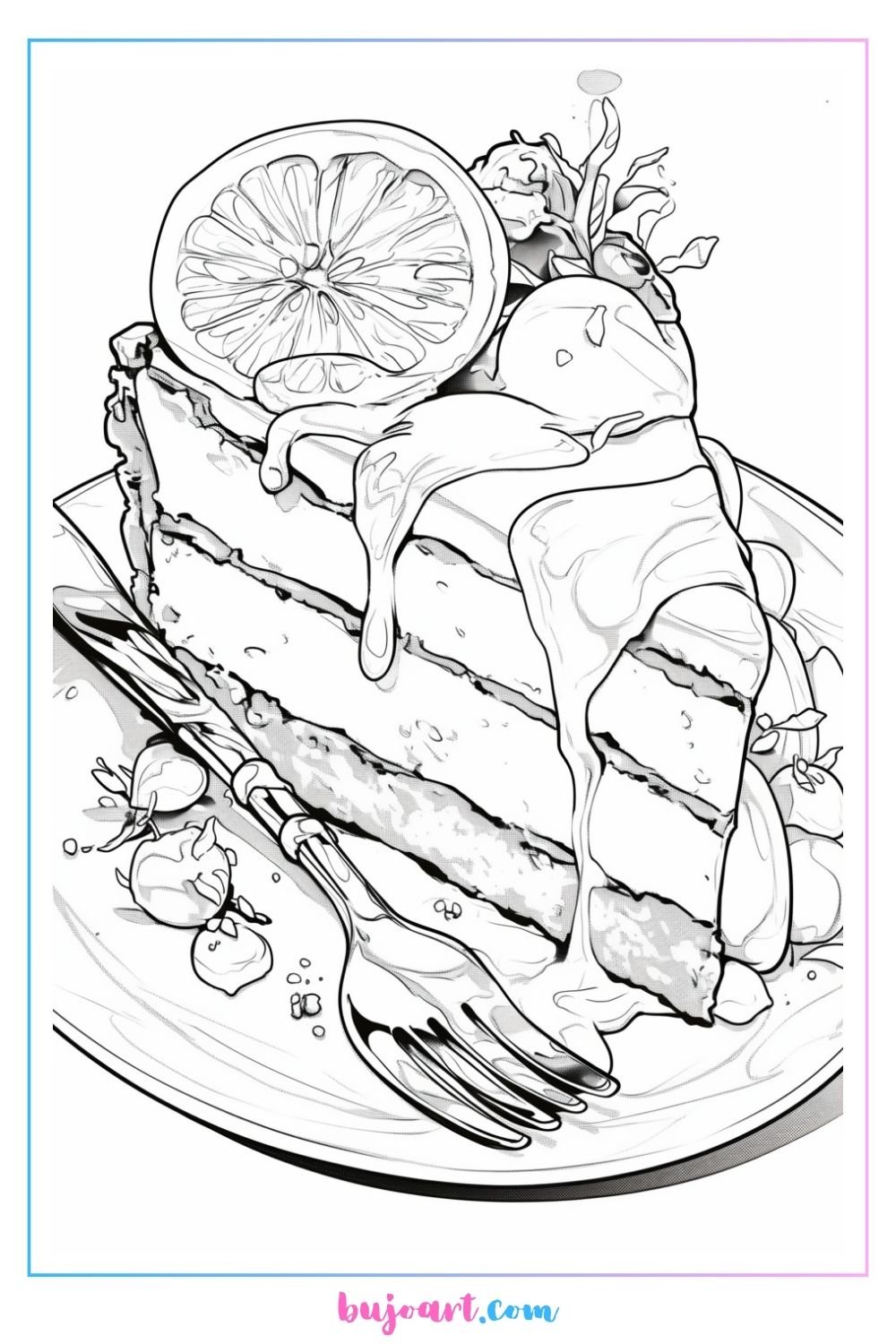If you’re having trouble getting started, take a look at some of these bullet journaling tips to help you get started and find success. You don’t need expensive stationary or software to get started! Most people think of bullet journals as something you do with a fancy notebook and high quality pens. The important thing to remember is that everyone has a different way of doing things, so you should figure out your way.
In this article, we will cover 10 essential keys to mastering the art of bullet journaling, including tips on setting up your journal, tracking habits and goals, and incorporating creative designs and spreads. With the right knowledge and techniques, you can take your bullet journaling to the next level and unlock its full potential.
1. Basic Terminology and Concepts
The overall concept of bullet journaling is to have a customizable and efficient system for organizing one’s life and thoughts. The use of symbols and shorthand allows for quick and easy recording of information, and the flexibility of the system allows for adaptation to personal needs and preferences.
-
Index: This is the first page in a bullet journal, where you list all the page numbers for different categories or collections.
-
Future Log: A spread where you can write down long-term plans, events, and appointments for the next six months to a year.
-
Monthly Log: A two-page spread for each month where you can write down appointments, events, and tasks.
-
Daily Log: A page for each day where you can write down daily tasks, appointments, and events.
-
Task: To-do items that need to be completed, usually represented by a dot or a bullet point.
-
Event: A scheduled appointment, meeting, or celebration, usually represented by a circle.
-
Note: A piece of information or an idea, usually represented by a dash or a hyphen.
-
Collection: A group of related pages or spreads, such as a habit tracker or a wish list.
-
Rapid Logging: A system for quickly capturing information in a bullet journal, using symbols and shorthand.
-
Key: A legend or reference list of symbols and abbreviations used in a bullet journal.
2. Setting Up and Planning
By considering following points, you can choose a bullet journal that meets your needs, and that will help you achieve your journaling goals. The idea is to choose a journal that you will love using, and that will help you stay organized, focused, and inspired. Here are some basic points to consider when choosing a bullet journal:
-
Size: Consider the size of your journal, as this will determine how much space you have to work with, and how portable your journal will be. Popular sizes include A5, B5, and pocket-sized journals.
-
Page Quality: Consider the quality of the pages in your journal, as this will affect how well your journal can handle different writing materials, such as pens, markers, and watercolors. Look for journals with thick, high-quality paper that is not easily prone to bleed-through or ghosting.
-
Binding: Consider the binding of your journal, as this will determine how well your journal will lay flat, and how easily you can turn the pages. Popular bindings include spiral, softcover, and hardcover journals.
-
Layout: Consider the layout of your journal, as this will determine how well the pages are organized, and how much flexibility you have to create custom spreads. Look for journals with dotted, grid, or blank pages, and consider whether you want the pages to be numbered or unnumbered.
-
Price: Consider the price of your journal, as this will determine how much you are willing to spend, and how much you can get for your money. Bullet journals can range in price from a few dollars to several hundred dollars, depending on the quality, size, and brand.
-
Personal Preference: Consider your personal preferences, such as the type of journal you prefer, your preferred writing material, and your preferred decorative elements. Choose a journal that reflects your style, and that you will enjoy using every day.
3. Monthly Spreads
A monthly spread provides a clear overview of the month ahead and allows you to track important information and activities. The idea is to use the spread as a tool to help you stay organized and focused on your priorities.
-
Dates and important events: Write down birthdays, anniversaries, and other important dates.
-
Tasks and to-do items: Write down tasks that need to be completed, along with any deadlines or due dates.
-
Appointments and events: Write down appointments, meetings, and events, including their time and location.
-
Habits and routines: Track habits or routines you want to establish or maintain, such as exercising or meditating.
-
Goals and plans: Write down goals for the month and steps to achieve them.
-
Reflections and notes: Use this space to reflect on the previous month, write down insights, or take notes on important information.
-
Decorative elements: Add doodles, washi tape, stickers, or other decorative elements to make the spread visually appealing and unique.
4. Weekly Spreads
A weekly spread provides a clear overview of the week ahead and allows you to track important information and activities. The idea is to use the spread as a tool to help you stay organized and focused on your priorities. Here are some common items to include in a weekly spread:
-
Dates and days of the week: Write down the dates and days of the week for the current week.
-
Tasks and to-do items: Write down tasks that need to be completed, along with any deadlines or due dates.
-
Appointments and events: Write down appointments, meetings, and events, including their time and location.
-
Habits and routines: Track habits or routines you want to establish or maintain, such as exercising or meditating.
-
Goals and plans: Write down goals for the week and steps to achieve them.
-
Reflections and notes: Use this space to reflect on the previous week, write down insights, or take notes on important information.
-
Meal planning: Plan out your meals for the week, including breakfast, lunch, dinner, and snacks.
-
Budget tracking: Track your expenses and budget for the week.
-
Decorative elements: Add doodles, washi tape, stickers, or other decorative elements to make the spread visually appealing and unique.
5. Daily Spreads
A daily spread provides a clear overview of the day ahead and allows you to track important information and activities. The idea is to use the spread as a tool to help you stay organized and focused on your priorities. Here are some common items to include in a daily spread:
-
Date and day of the week: Write down the date and day of the week at the top of the page.
-
Tasks and to-do items: Write down tasks that need to be completed, along with any deadlines or due dates.
-
Appointments and events: Write down appointments, meetings, and events, including their time and location.
-
Habits and routines: Track habits or routines you want to establish or maintain, such as exercising or meditating.
-
Goals and plans: Write down goals for the day and steps to achieve them.
-
Reflections and notes: Use this space to reflect on the previous day, write down insights, or take notes on important information.
-
Gratitude list: Write down things you are grateful for to maintain a positive outlook and mindset.
-
Mood tracker: Track your mood for the day, using symbols or colors to represent different emotions.
-
Decorative elements: Add doodles, washi tape, stickers, or other decorative elements to make the spread visually appealing and unique.
6. Collection and Trackers
These trackers can be customized to fit the individual’s needs and preferences, and can be as simple or elaborate as desired. The idea is to use these trackers as a tool to help you stay on track and reach your goals. Here are some commonly used trackers in a bullet journal:
-
Habit Tracker: A habit tracker is used to track daily or weekly habits, such as exercising, drinking water, or meditating.
-
Mood Tracker: A mood tracker is used to track your moods and emotions throughout the day or week, using symbols or colors to represent different emotions.
-
Sleep Tracker: A sleep tracker is used to track the amount and quality of sleep, including bedtime and wake-up time.
-
Gratitude Tracker: A gratitude tracker is used to track things you are grateful for, helping to maintain a positive outlook and mindset.
-
Water Tracker: A water tracker is used to track the amount of water you drink each day, helping to maintain hydration.
-
Meal Tracker: A meal tracker is used to track what you eat and drink each day, helping to monitor nutrition and make healthier choices.
-
Budget Tracker: A budget tracker is used to track income and expenses, helping to manage your finances and stay within a budget.
-
Fitness Tracker: A fitness tracker is used to track physical activity, including exercise and steps taken, helping to monitor fitness and make healthier choices.
-
Medication Tracker: A medication tracker is used to track the taking of prescribed medications, helping to ensure you take the right dose at the right time.
7. Decorative Elements
These decorative elements can be used to make your bullet journal visually appealing, to reflect your personality and style, and to create a unique and meaningful journal. The idea is to use these elements to make your journal both functional and enjoyable to use. Here are some common decorative elements used in a bullet journal:
-
Washi Tape: Washi tape is a type of decorative tape that comes in a variety of colors and patterns, and can be used to decorate pages, create borders, and add accents.
-
Stickers: Stickers come in a wide range of designs and themes, and can be used to decorate pages, highlight important information, or add personality to your journal.
-
Doodles and Drawings: Doodles and drawings can be used to add creativity and personality to your journal, and can range from simple sketches to elaborate illustrations.
-
Color Pens: Color pens can be used to add color to your journal, highlight important information, or create decorative elements such as headers and titles.
-
Highlighters: Highlighters can be used to draw attention to important information, or to color code different categories of information.
-
Lettering and Calligraphy: Lettering and calligraphy can be used to create beautiful headings, titles, and labels, or to add decorative elements such as quotes or affirmations.
-
Stencils: Stencils can be used to create shapes and patterns, or to create neat and consistent borders, backgrounds, and accents.
8. Advanced Techniques
These advanced techniques can add a level of creativity, detail, and organization to your bullet journal, and can help you make the most of your journaling experience. The idea is to experiment and find the techniques that work best for you, and to use them to make your bullet journal both functional and enjoyable. Here are some advanced techniques for bullet journaling:
-
Collection Pages: Collection pages are dedicated pages for specific topics or themes, such as books to read, movies to watch, or recipes to try.
-
Future Log: A future log is a page or spread that lists important events and deadlines for the next several months, providing a long-term view of your schedule and plans.
-
Weekly Spreads: Weekly spreads are a more detailed version of a daily spread, with space for a to-do list, appointments, and events, along with other information such as goals, reflections, and notes.
-
Indexing: Indexing is the process of creating an index of your bullet journal pages, making it easier to find and reference information. Indexing can be done manually, or by using an indexing app or software.
-
Stenciling: Stenciling is the use of templates or stencils to create shapes and patterns, or to create neat and consistent borders, backgrounds, and accents. Stenciling can be done manually, or by using a cutting machine or digital tool.
-
Watercolor Painting: Watercolor painting can be used to create beautiful and intricate backgrounds, or to add color and texture to your journal pages. Watercolor painting can be done using watercolor pencils, paints, or markers.
-
Calligraphy: Calligraphy is the art of beautiful handwriting, and can be used to create headings, titles, labels, and other text elements in your journal. Calligraphy can be done with a calligraphy pen, brush pen, or marker.
9. Problem Solving
By using the Problem Solving section of your bullet journal to address your issues, you can overcome obstacles, achieve your goals, and lead a more fulfilling life. Here’s a more detailed explanation of each of the elements you mentioned in the Problem Solving section of a bullet journal:
-
Missed Tasks: A missed task can be a task that was not completed on time, or a task that was forgotten. In a bullet journal, you can create a task list or to-do list, and track your progress. You can also set reminders or deadlines to help ensure that you complete your tasks on time.
-
Overwhelm: Overwhelm can occur when you have too many tasks, responsibilities, or projects to manage. In a bullet journal, you can prioritize your tasks, delegate responsibilities, and take breaks. You can also create a system for managing your tasks and responsibilities, and set boundaries to help you avoid burnout.
-
Plateauing: Plateauing occurs when you have reached a level of progress, and are no longer making progress towards your goals. In a bullet journal, you can set new goals and challenge yourself with new projects or habits. You can also track your progress, and celebrate your successes along the way.
-
Inconsistency: Inconsistency can occur when you struggle to maintain a routine, habit, or goal. In a bullet journal, you can create routines and habits, and track your progress. You can also set reminders, and hold yourself accountable for maintaining consistency.
-
Creativity blocks: Creativity blocks occur when you struggle to generate new ideas, or when you feel uninspired. In a bullet journal, you can try new things, set aside dedicated time for creative activities, and surround yourself with inspiration. You can also brainstorm new ideas, and track your creative progress over time.
10. Tips and Tricks
By using these tips and tricks, you can optimize your bullet journaling experience, and achieve your goals more effectively. Here’s a more detailed explanation of each of the tips and tricks you mentioned:
-
Time-saving techniques: To save time in your bullet journal, you can use shortcuts, templates, and symbols to quickly capture information. You can also use color coding, categorization, and prioritization to quickly find the information you need. Additionally, you can automate repetitive tasks, and use digital tools to simplify your journaling process.
-
Motivation: To stay motivated, you can set achievable goals, track your progress, and celebrate your successes. You can also surround yourself with inspiration, and find a support system of like-minded individuals. Additionally, you can use visualization techniques, and set reminders and alerts to help keep you on track.
-
Staying organized: To stay organized, you can create a system for managing your tasks and responsibilities. You can also use calendars, lists, and schedules to manage your time, and prioritize your tasks. Additionally, you can use color coding, categorization, and prioritization to quickly find the information you need.
-
Adapting to change: To adapt to change, you can be flexible, and be open to trying new things. You can also be proactive, and plan for changes before they occur. Additionally, you can track your progress, and celebrate your successes along the way.
-
Making the most of your journal: To make the most of your bullet journal, you can experiment with different styles, themes, and layouts. You can also use your journal to reflect on your thoughts, feelings, and experiences. Additionally, you can use your journal to set achievable goals, track your progress, and celebrate your successes.
It may seem daunting to set up a bullet journal; however, it doesn’t have to be. Start by figuring out the most important tasks in your life and filling in their corresponding boxes Today!
Hope this article provides you a clear view of Bullet Journal, and share your works with us on INSTAGRAM today!





















